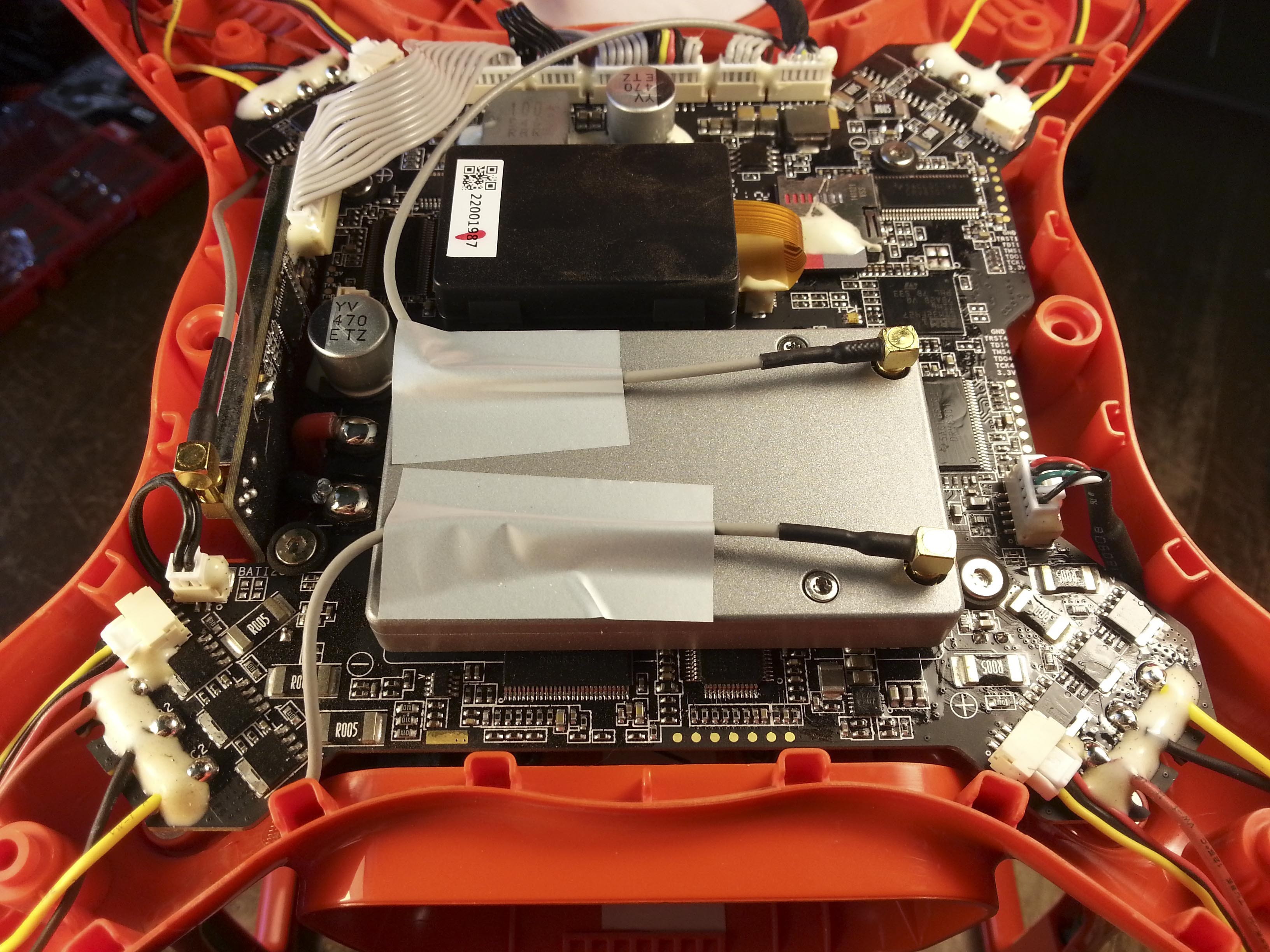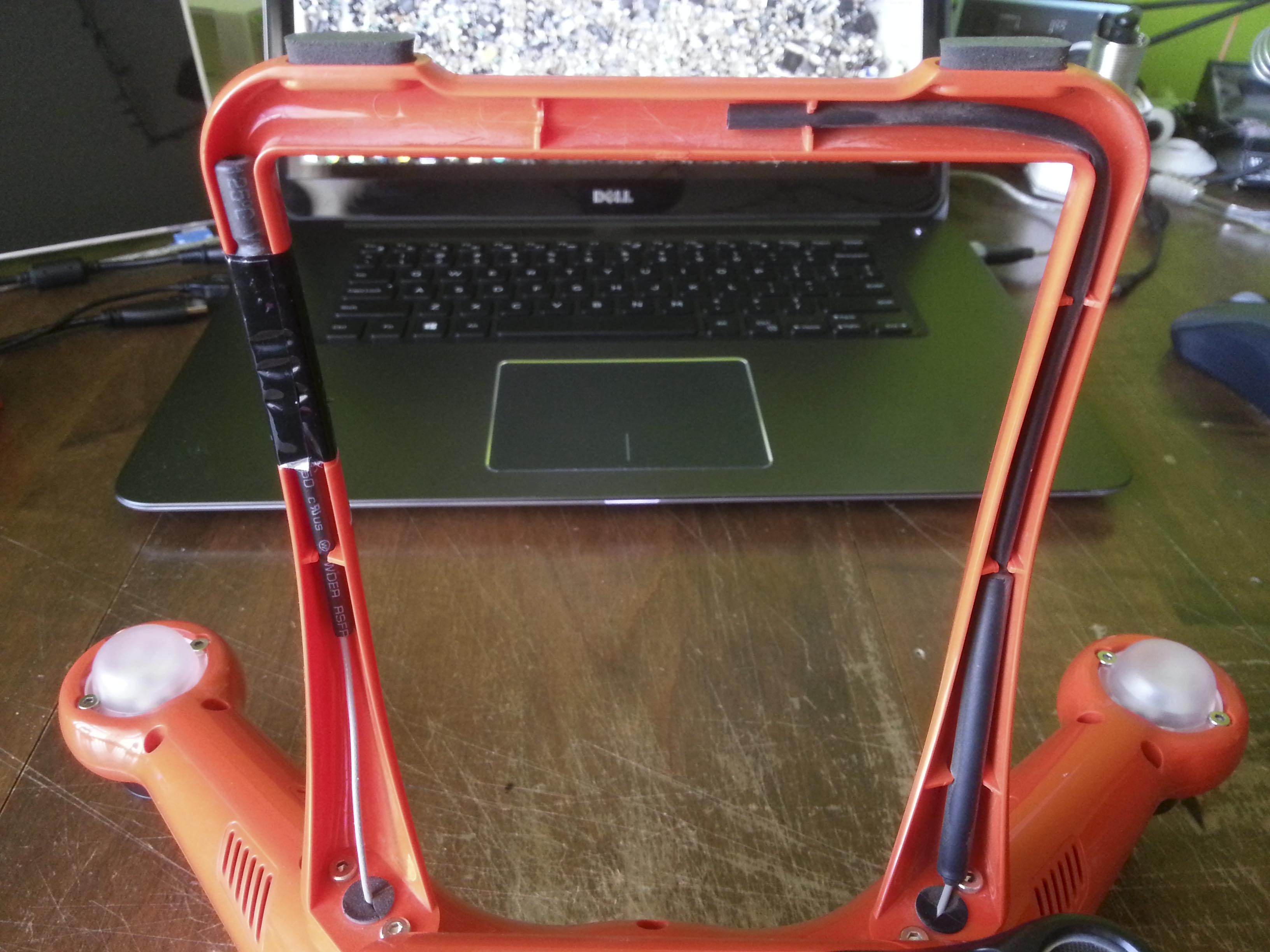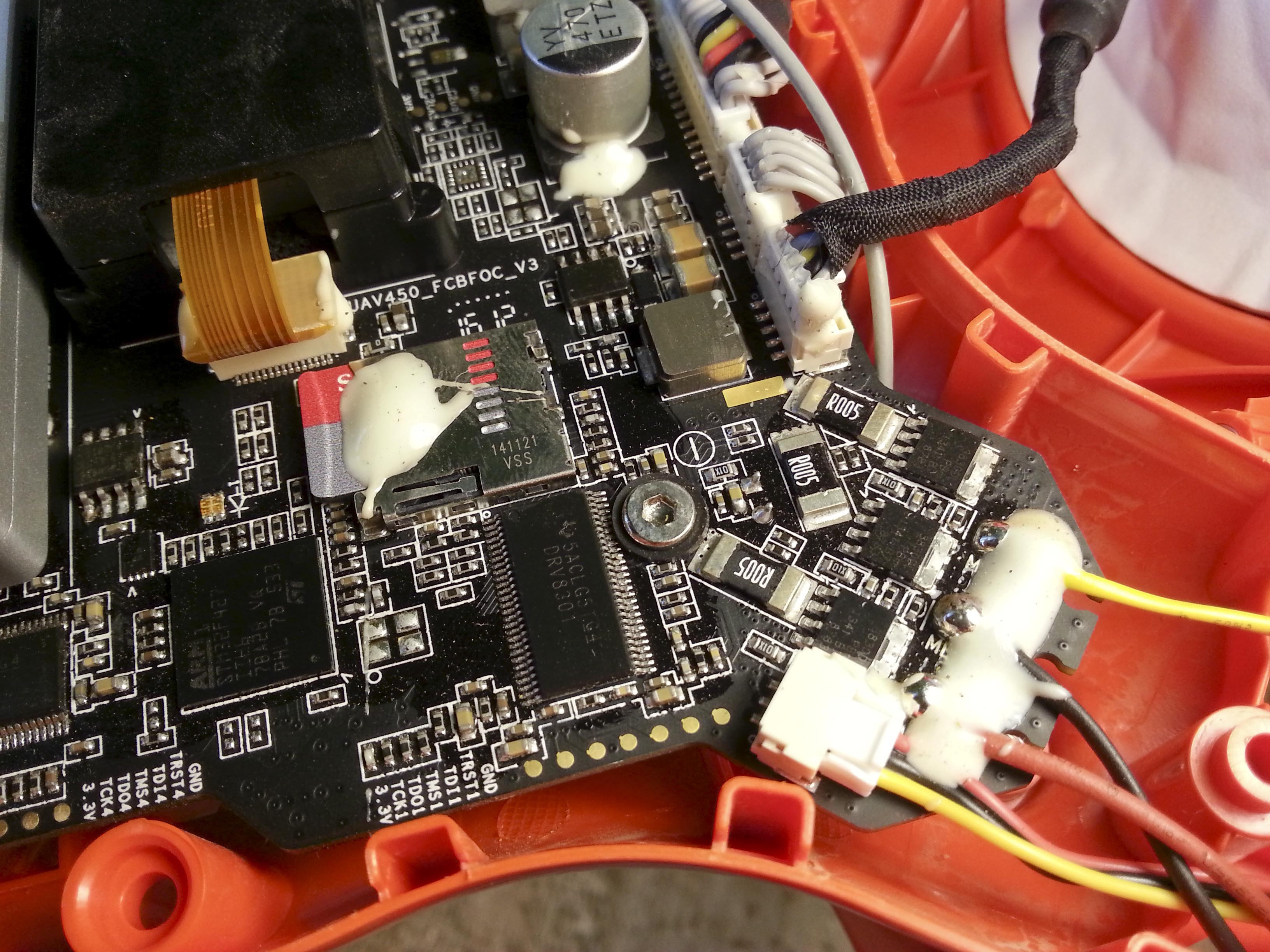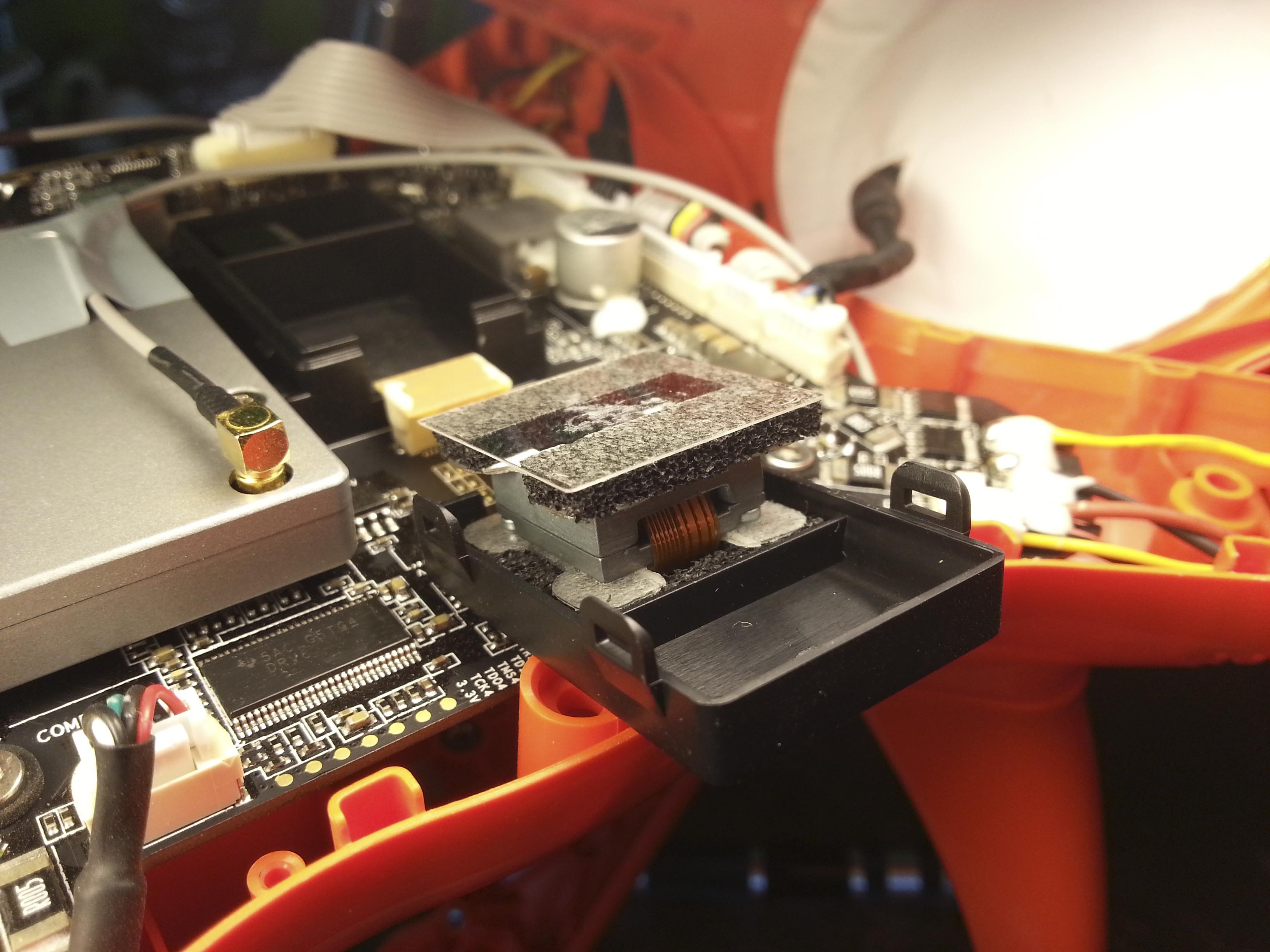Is your Autel X-Star refusing to link with its controller? CARDIAGTECH.NET is here to help you diagnose and fix connection problems, ensuring you get back to flying quickly. We’ll explore common reasons for connection failures and provide detailed troubleshooting steps, and showcase how the right tools can ease the process.
1. Understanding the Autel X-Star Connection System
The Autel X-Star series relies on a robust communication system between the drone and its controller. This system uses radio frequencies to transmit control signals and receive telemetry data. Key components include:
- Aircraft Radio Module: Transmits video and receives control signals (5.8GHz or 900MHz depending on the model).
- Controller Radio Module: Sends commands and receives drone status updates.
- Antennas: Facilitate signal transmission and reception.
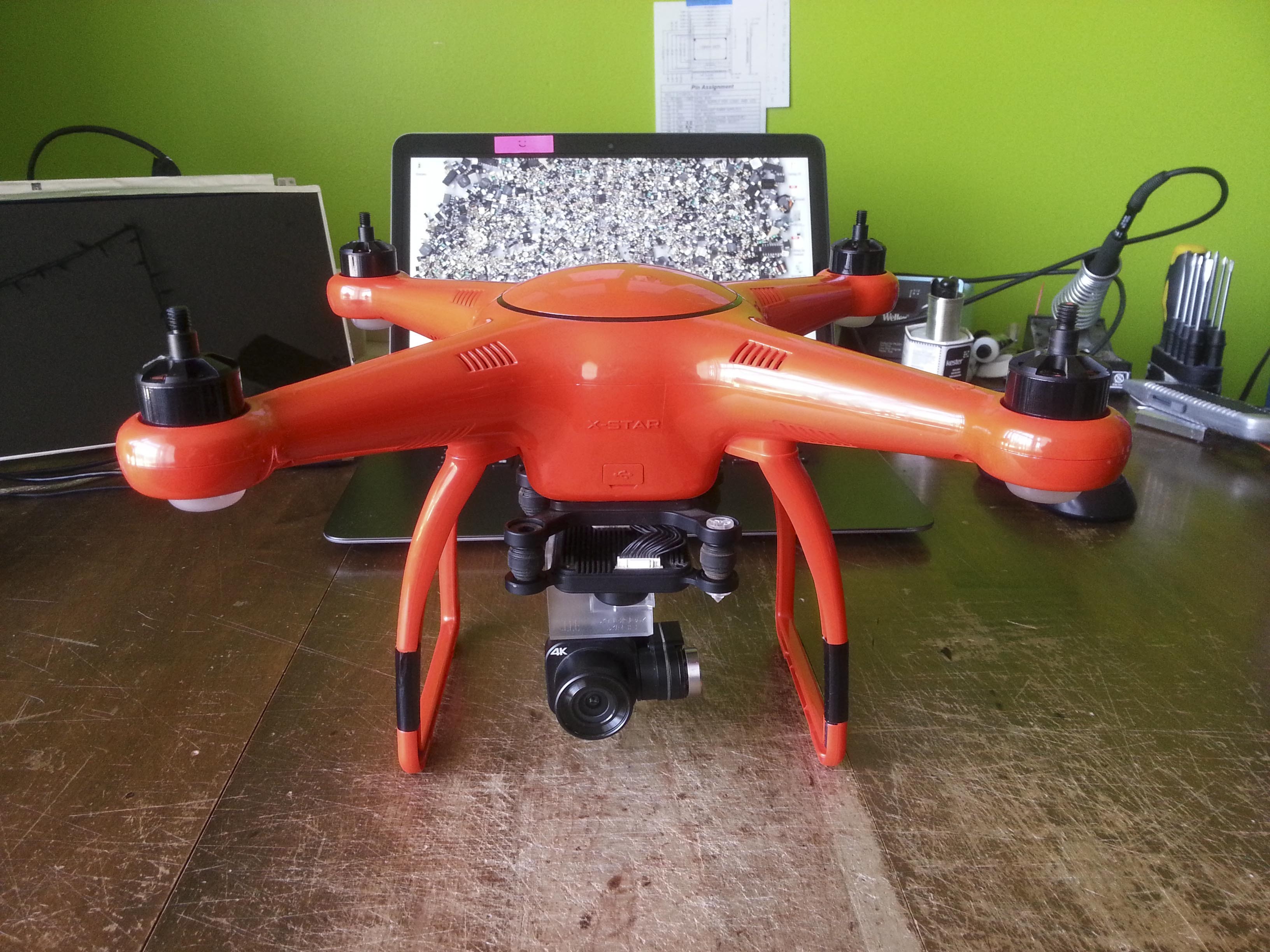
Alt: Autel X-Star Premium drone overview, highlighting its compact design and advanced features.
A stable connection is essential for safe and reliable flight, enabling features like real-time video feed, GPS positioning, and intelligent flight modes. Disruptions can lead to loss of control or unexpected behavior, making troubleshooting connection issues a top priority.
2. Common Causes of Connection Problems
Several factors can contribute to connection failures between the Autel X-Star and its controller. Identifying the root cause is the first step towards resolving the issue. Here’s a breakdown of common culprits:
2.1 Radio Frequency Interference
- Description: Other electronic devices emitting radio waves can interfere with the drone’s control and video signals. This interference can disrupt communication and prevent a stable connection.
- Examples: Wi-Fi routers, Bluetooth devices, cell phones, microwave ovens, and high-voltage power lines.
- Impact: Signal degradation, reduced range, intermittent connection drops.
2.2 Distance and Obstacles
- Description: The farther the drone flies from the controller, the weaker the signal becomes. Physical obstacles in the signal path can further weaken or block the signal entirely.
- Examples: Buildings, trees, hills, and dense foliage.
- Impact: Reduced control range, complete signal loss.
2.3 Controller Issues
- Description: Problems with the controller itself can prevent it from connecting to the drone. These issues can range from simple settings to more complex hardware failures.
- Examples:
- Incorrect settings or configurations.
- Outdated firmware.
- Damaged antennas.
- Faulty radio module.
- Impact: Inability to control the drone, failure to initiate pairing.
2.4 Aircraft Issues
- Description: Like the controller, the drone can also experience hardware or software issues that prevent connection.
- Examples:
- Outdated firmware.
- Damaged antennas.
- Faulty radio module.
- IMU or GPS malfunction.
- Impact: Drone unresponsive to commands, failure to establish connection.
2.5 Firmware Mismatches
- Description: Incompatible firmware versions between the drone and controller can cause connection problems. It’s essential to keep both devices updated to the latest compatible versions.
- Impact: Connection failures, unstable flight behavior, loss of functionality.
2.6 Binding Problems
- Description: The process of linking the controller to the drone (binding) may not have been completed correctly, or the binding may have been lost.
- Impact: Inability to control the drone, connection errors.
2.7 Antenna Problems
- Description: The antennas on both the drone and the controller are crucial for signal transmission. Damage or incorrect positioning can significantly impact connectivity.
- Examples:
- Broken or loose antennas.
- Incorrect antenna orientation.
- Internal antenna wire damage.
- Impact: Reduced signal strength, complete signal loss.
3. Step-by-Step Troubleshooting Guide
Follow these steps to systematically troubleshoot the connection issue between your Autel X-Star and its controller.
3.1 Initial Checks
- Battery Levels: Ensure both the drone and controller batteries are fully charged. Low battery levels can cause connection instability.
- Physical Damage: Inspect both the drone and controller for any visible damage, particularly to the antennas.
- Environment: Move to an open area away from potential sources of radio interference like Wi-Fi routers, Bluetooth devices, and high-voltage power lines.
3.2 Controller Troubleshooting
- Restart Controller: Turn off the controller completely, wait for a few seconds, and then turn it back on.
- Check Controller Settings:
- Ensure the controller is in the correct mode for your drone model.
- Verify that no settings are conflicting with the connection process.
- Antenna Position: Make sure the controller antennas are correctly oriented. Generally, point them upwards and towards the drone.
- Controller Firmware:
- Check for firmware updates using the Autel Assistant software or the Autel Explorer app.
- Update to the latest compatible version.
3.3 Aircraft Troubleshooting
- Restart Aircraft: Power cycle the drone by turning it off, waiting a few seconds, and then turning it back on.
- Aircraft Firmware:
- Check for firmware updates using the Autel Assistant software or the Autel Explorer app.
- Update to the latest compatible version, ensuring it matches the controller firmware.
3.4 Re-Binding the Controller
If the basic steps don’t work, re-binding the controller can often solve the connection problem.
- Power On: Turn on both the drone and the controller.
- Enter Binding Mode:
- On the controller, navigate to the system settings or connection menu.
- Select the “Bind Aircraft” option.
- On the drone, locate the binding button (refer to your user manual for the exact location).
- Press and hold the binding button until the drone’s status lights indicate it’s in binding mode (usually flashing).
- Initiate Binding: Follow the on-screen prompts in the Autel Explorer app or Autel Assistant software to initiate the binding process.
- Wait for Completion: Allow the binding process to complete. The drone and controller will usually indicate a successful connection with a solid light or a confirmation message.
- Test Connection: After binding, test the connection by attempting to control the drone.
3.5 Advanced Troubleshooting Steps
If the above steps don’t resolve the issue, consider these advanced techniques:
-
Factory Reset: Reset both the drone and controller to their factory settings. This can resolve software conflicts that may be causing connection problems.
- Caution: This will erase all custom settings.
-
Check the Internal Components:
- Access: Carefully open the drone and controller (if comfortable).
- Inspect: Check for loose connections, damaged antennas, or any signs of physical damage to the radio modules.
- Note: This may void your warranty, so proceed with caution.
-
Software Conflicts: Ensure that there are no conflicting applications or drivers on your mobile device that might interfere with the Autel Explorer app.
-
Contact Support: If all else fails, contact Autel customer support for further assistance. They may have specific troubleshooting steps for your particular issue or be able to identify a hardware problem.
4. Tools for Effective Troubleshooting
Having the right tools can significantly simplify the troubleshooting process. Here are some recommended tools:
- Autel Assistant Software: A desktop application for updating firmware, calibrating sensors, and diagnosing issues.
- Autel Explorer App: A mobile app for controlling the drone, monitoring flight data, and accessing settings.
- Screwdriver Set: For opening the drone and controller to inspect internal components.
- Multimeter: For testing electrical connections and components.
- Signal Analyzer: A device that can measure radio frequency signals to identify interference and assess signal strength.
- USB Cable: A high-quality USB cable for connecting the drone and controller to your computer for firmware updates and diagnostics.
5. Understanding Radio Frequencies
The Autel X-Star uses specific radio frequencies for communication. Understanding these frequencies can help you troubleshoot connection issues.
5.1 Frequency Bands
The Autel X-Star typically operates on the following frequency bands:
- 5.8 GHz: Used for control signals in some regions.
- 900 MHz: Used for video transmission in the Premium model.
- 2.4 GHz: Used for Wi-Fi video transmission in the Standard model.
5.2 Potential Interference
Each frequency band is susceptible to different types of interference.
- 2.4 GHz: Commonly used by Wi-Fi routers, Bluetooth devices, and other household electronics, making it prone to congestion.
- 5.8 GHz: Generally less congested than 2.4 GHz, but can be affected by microwave ovens and some cordless phones.
- 900 MHz: Used for telecommunications and broadband in some regions, which can cause conflicts.
5.3 Strategies to Minimize Interference
- Choose Optimal Locations: Fly in areas with minimal radio frequency activity.
- Avoid Obstacles: Keep a clear line of sight between the drone and controller.
- Frequency Hopping: Some drones use frequency hopping to avoid interference. Check if your Autel X-Star supports this feature.
- Directional Antennas: Use directional antennas to focus the signal between the drone and controller.
6. Antenna Optimization
Proper antenna positioning is crucial for maintaining a strong and stable connection.
6.1 Antenna Types
The Autel X-Star typically uses dipole antennas, which radiate signals in a donut-shaped pattern.
6.2 Optimal Positioning
- Orientation: Position the antennas vertically and point them towards the drone.
- Avoid Obstructions: Ensure that the antennas are not blocked by your body or other objects.
- Distance: Keep the drone within the recommended range for optimal signal strength.
6.3 Antenna Maintenance
- Inspect Regularly: Check for damage or loose connections.
- Clean Antennas: Keep antennas clean to ensure optimal signal transmission.
- Replace if Necessary: Replace damaged antennas with genuine Autel parts.
7. Firmware Updates: A Critical Step
Keeping your Autel X-Star firmware up to date is essential for optimal performance and connectivity. Firmware updates include bug fixes, performance improvements, and new features.
7.1 How to Update Firmware
-
Autel Assistant Software:
- Download and install the Autel Assistant software on your computer.
- Connect the drone or controller to your computer using a USB cable.
- Launch the software and follow the on-screen prompts to check for and install updates.
-
Autel Explorer App:
- Open the Autel Explorer app on your mobile device.
- Connect to the drone via Wi-Fi.
- The app will automatically check for firmware updates and prompt you to install them.
7.2 Best Practices
- Battery Levels: Ensure both the drone and controller have sufficient battery power before starting the update process.
- Stable Connection: Maintain a stable internet connection during the update.
- Follow Instructions: Carefully follow the on-screen instructions to avoid errors.
- Restart Devices: Restart both the drone and controller after the update is complete.
8. Understanding the Autel Explorer App
The Autel Explorer app is a powerful tool for controlling your Autel X-Star and monitoring its performance. Understanding its features can help you troubleshoot connection issues.
8.1 Key Features
- Real-Time Video Feed: Provides a live video stream from the drone’s camera.
- Flight Parameters: Displays important flight data such as altitude, speed, distance, and battery level.
- Settings Menu: Allows you to configure various settings, including control modes, camera settings, and connection parameters.
- Firmware Updates: Enables you to check for and install firmware updates.
- Diagnostics: Provides diagnostic information about the drone’s status and potential issues.
8.2 Troubleshooting with the App
- Check Connection Status: The app displays the connection status between the drone and controller.
- Monitor Signal Strength: The app shows the signal strength of the control and video signals.
- Access Diagnostic Information: Use the app to access diagnostic information about the drone’s status and potential issues.
- Calibrate Sensors: Calibrate the drone’s sensors using the app to ensure accurate flight performance.
9. Preventative Measures
Taking preventative measures can help minimize the risk of connection problems in the future.
9.1 Pre-Flight Checklist
- Inspect Equipment: Check the drone and controller for any signs of damage.
- Charge Batteries: Ensure batteries are fully charged.
- Update Firmware: Verify that both devices have the latest firmware.
- Check Settings: Confirm that all settings are correct.
- Environment Scan: Assess the environment for potential sources of interference.
9.2 During Flight
- Maintain Line of Sight: Keep a clear line of sight between the drone and controller.
- Monitor Signal Strength: Pay attention to the signal strength indicators.
- Avoid Obstacles: Steer clear of obstacles that could block the signal.
- Fly Within Range: Stay within the recommended range for optimal performance.
9.3 Post-Flight Maintenance
- Clean Equipment: Clean the drone and controller after each flight.
- Store Properly: Store the drone and controller in a safe and dry place.
- Regular Inspections: Perform regular inspections to identify potential issues.
10. Advanced Component Analysis
This section delves into the individual components within the Autel X-Star that affect connectivity.
10.1 RF Modules
- Function: The RF modules are responsible for transmitting and receiving radio signals.
- Troubleshooting:
- Check for loose connections or damage.
- Use a multimeter to test the power supply to the modules.
- Consider replacing the modules if they are faulty.
Alt: Detailed view of the Autel X-Star’s 900MHz video RF module, showcasing its internal components and shielding.
10.2 Antennas
- Function: Antennas radiate and receive radio waves.
- Troubleshooting:
- Inspect for physical damage.
- Ensure proper connection to the RF modules.
- Use a signal analyzer to test antenna performance.
Alt: Close-up of the Autel X-Star’s antennas, illustrating their placement and connection within the drone’s structure.
10.3 Main Board
- Function: The main board integrates the flight controller, ESCs, and power distribution.
- Troubleshooting:
- Check for loose connections or damage.
- Ensure proper power supply to all components.
- Look for signs of overheating or component failure.
Alt: A detailed look at the Autel X-Star’s main board, pointing out the motor driver components and integrated circuits.
10.4 IMU (Inertial Measurement Unit)
- Function: The IMU measures the drone’s orientation and movement.
- Troubleshooting:
- Calibrate the IMU using the Autel Assistant software or Autel Explorer app.
- Check for physical damage to the IMU module.
- Ensure the IMU is properly mounted and secured.
Alt: Inside the Autel X-Star’s IMU, showing the sensor encased in a metal shell for vibration isolation.
11. Case Studies
Let’s examine some real-world scenarios and how to address them.
Case Study 1: Urban Interference
- Problem: Frequent signal drops in a city environment.
- Solution:
- Fly in less congested areas.
- Use a 5.8 GHz frequency band if available.
- Consider using directional antennas.
Case Study 2: Range Limitations
- Problem: Limited control range in a rural area with trees.
- Solution:
- Maintain a clear line of sight.
- Elevate the controller for better signal propagation.
- Upgrade to higher-gain antennas if possible.
Case Study 3: Controller Not Binding
- Problem: The controller refuses to bind with the drone.
- Solution:
- Ensure both devices are fully charged.
- Follow the binding procedure carefully.
- Try a factory reset.
12. Regulatory Compliance
Understanding and complying with aviation regulations is essential for safe and legal drone operation.
12.1 FAA Regulations (USA)
- Registration: Register your drone with the FAA if it weighs more than 0.55 pounds.
- Part 107: Obtain a Remote Pilot Certificate if you intend to fly for commercial purposes.
- Operating Rules: Follow all FAA operating rules, including altitude restrictions, airspace restrictions, and visual line of sight requirements.
12.2 Other Regulations
- Local Laws: Be aware of local laws and ordinances regarding drone operation.
- Privacy: Respect the privacy of others when flying your drone.
- Restricted Areas: Avoid flying near airports, military bases, and other restricted areas.
13. Additional Resources
- Autel Robotics Website: The official Autel Robotics website provides product information, support resources, and firmware updates.
- Online Forums: Online drone forums are great places to ask questions, share experiences, and get help from other users.
- User Manuals: Refer to the user manuals for detailed information about your Autel X-Star and its features.
- YouTube Tutorials: Numerous YouTube channels offer tutorials and troubleshooting tips for Autel drones.
14. Benefits of Purchasing Tools from CARDIAGTECH.NET
At CARDIAGTECH.NET, we understand the challenges faced by auto repair professionals. That’s why we offer a range of diagnostic tools and equipment designed to enhance efficiency, accuracy, and profitability. Here’s why you should choose us:
- High-Quality Products: We offer only the best diagnostic tools and equipment, ensuring reliable performance and accurate results.
- Expert Support: Our knowledgeable team can help you select the right tools for your needs and provide ongoing support.
- Competitive Pricing: We offer competitive pricing on all our products, helping you maximize your investment.
- Comprehensive Solutions: From basic code readers to advanced diagnostic platforms, we have everything you need to tackle any repair job.
- Customer Satisfaction: We are committed to providing excellent customer service and ensuring your complete satisfaction.
15. Conclusion: Stay Connected and Fly Safely
Troubleshooting connection problems with your Autel X-Star can be frustrating, but by following these steps, you can identify and resolve the issue. Remember to prioritize safety and regulatory compliance when operating your drone. For reliable diagnostic tools and expert support, trust CARDIAGTECH.NET.
Experiencing persistent connection issues with your Autel X-Star? Don’t let it ground your passion. Contact CARDIAGTECH.NET today at +1 (641) 206-8880 or visit our website at CARDIAGTECH.NET for expert advice and premium diagnostic tools. Let us help you get back in the air! Find us at 276 Reock St, City of Orange, NJ 07050, United States.
FAQ: Autel X-Star Connection Issues
1. Why is my Autel X-Star not connecting to the controller?
Several factors can cause this, including radio interference, distance, outdated firmware, or incorrect binding. Follow our troubleshooting steps to diagnose the issue.
2. How do I re-bind my Autel X-Star controller?
Power on both the drone and controller, enter binding mode on both devices, and follow the on-screen prompts in the Autel Explorer app or Autel Assistant software.
3. How do I update the firmware on my Autel X-Star?
Use the Autel Assistant software on your computer or the Autel Explorer app on your mobile device to check for and install firmware updates.
4. What should I do if I experience signal interference while flying?
Move to an open area away from potential sources of interference, maintain a clear line of sight, and consider using a 5.8 GHz frequency band if available.
5. How can CARDIAGTECH.NET help with my drone issues?
CARDIAGTECH.NET offers expert advice and high-quality diagnostic tools to help you troubleshoot and resolve connection problems with your Autel X-Star.
6. What are the FAA regulations for flying drones in the US?
Register your drone with the FAA if it weighs more than 0.55 pounds, obtain a Remote Pilot Certificate if flying for commercial purposes, and follow all FAA operating rules.
7. Where can I find the latest firmware updates for my Autel X-Star?
Check the Autel Robotics website or use the Autel Assistant software or Autel Explorer app.
8. What is the optimal antenna position for my Autel X-Star controller?
Position the antennas vertically and point them towards the drone, ensuring they are not blocked by your body or other objects.
9. How do I perform a factory reset on my Autel X-Star?
Refer to your user manual for instructions on how to perform a factory reset on both the drone and controller.
10. What tools do I need for troubleshooting my Autel X-Star?
Recommended tools include the Autel Assistant software, Autel Explorer app, screwdriver set, multimeter, signal analyzer, and a high-quality USB cable.

